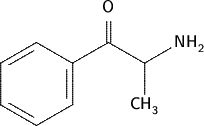About 15 years ago I went on a medical academic visit to the Yemeni capital, Sana'a. Everyone was very hospitable, and one afternoon a Yemeni colleague invited me to join him socially to chew qat [khat]. This grows as a small tree (Catha edulis) that flourishes around the Red Sea, with leaves like privet. These leaves contain cathinone ([Alpha]-aminopropiophenone, related to amphetamine) as the most powerful substance, which breaks down within days to the weaker carbine (norpseudoephedrine), and related compounds. So they act as uppers; a near equivalent Western upper is "speed". For maximum potency qat must be picked in the morning and chewed that afternoon, though it is transported by air and used by the Yemeni community in Britain and elsewhere. Doctors in Britain might see patients with problems related to qat.
We went to a middle class house where there were about 10 local men, and sat in a room around a low table covered with rugs: a pile of twigs covered with leaves, and a cup were already laid out by each place. I was proudly told that the leaves were top quality, and was instructed what to do. I picked a few leaves, chewed them to a pulp, then transferred the pulp to my left cheek and sucked the almost tasteless .juice. The process was repeated over the next couple of hours while my cheek got fatter and fatter. A manservant came round regularly to fill our cups with weak tea. There were hookahs in the middle of the table, and I took turns in inhaling the tobacco smoke. The main effect on me was insensibility to the passage of time. When the party ended after about three hours and we spat out the leaves, my colleague and I went to the hammam with the water heated by burning bullocks' heads that were stored in piles outside--but that is another story--I thought that barely an hour had passed. I was euphoric, very wide awake, extremely friendly, and talkative with a free flow of ideas, but afterwards could remember little of the conversation. My mouth was dry, hence the need for much fluid. The effects wore off after about an hour.
It was explained to me that there are several problems from the ubiquity of qat chewing. In the town in the mornings you see the stalks being brought in from plantations that should be producing food, or growing coffee for export, but qat brings better profits for the farmers. In the afternoons men are seen in public alone or in groups, as well as being at home (where women also indulge), chewing qat for hours instead of working, and using money that should have been spent on their households.
Every society has its own forms of chemical escape.
D N Baron, retired professor of chemical pathology, London
COPYRIGHT 1999 British Medical Association
COPYRIGHT 2000 Gale Group



